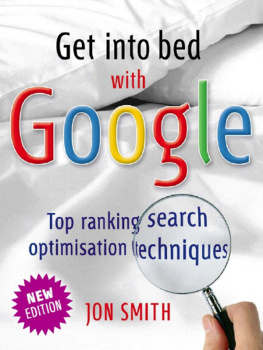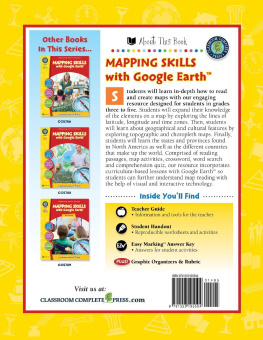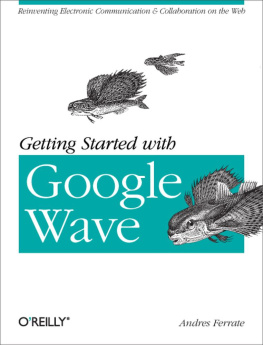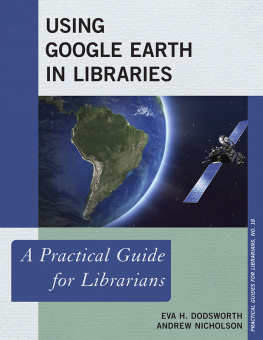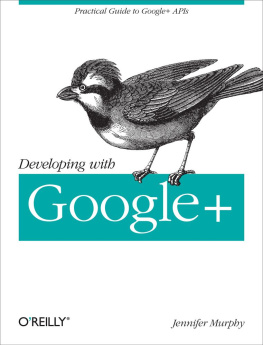I wish to acknowledge the following people who have edited or read and commented on or even just talked with me about my writing the material in this book. They have provided very necessary intellectual company and encouragement, I thank them very much: Michael Edmunds and Stuart J. Murray from Media Tropes; Hart Cohen and Rachel Morley from Global Media Journal Australian Edition; my colleagues Craig Hight, Kate Nash and Fiona Jenkins; Nandita Sharma, my research assistant in the early stages of writing the book (as funded by the College of Arts and Social Sciences, Australian National University); David Dumaresq; Rebecca Moore from Google Earth Outreach; and Katie Gallof and Mary Al-Sayed from Bloomsbury Publishing. I also wish to acknowledge my colleagues who regularly attend the Visible Evidence Documentary Studies Conference. Over the last five years, this conference has been a wonderful forum for presenting and gaining feedback on my research into Google Earth.
Sections in this book can also be attributed to articles I have previously published on Google Earth. extends my paper Web-Weaving: The Affective Movement of Documentary Imaging, published in New Documentary Ecologies. Emerging Platforms, Practices and Discourses, eds Kate Nash, Craig Hight and Catherine Summerhayes (London: Palgrave Macmillan, 2014).
Gulliver or Alice would say: Ive been changed several times. But for Alice the visible world does not run up against the screen of the mirror; the luminous reflective is not a limit but a point of passage.
Paul Virilio
One of the major challenges that society faces at this current historical moment is to understand how we embody our perception of the world via digital technologies. Actual people and places populate this world that is represented to us as existing in a new kind of communicative space. We are faced with the question of how we are developing a new kind of social intelligence that incorporates the information we gain through the mediated yet always real spaces available to us via digital media platforms that are created from corporately owned software networks and systems. Many of these software systems have till now only been minimally critiqued for their social implications. The first tenet that underlies the argument in this book is that there is an imperative to understand how social networking and information websites work in socio- and geopolitical contexts, if society is to use these sites effectively and for the public good.in both the scholarly and public sphere: that digital technologies have affected human sociality how we as humans relate to each other, to our communication technologies and to the rest of our environment. In Sherry Turkles words:
We are witnessing a new form of sociality in which the isolation of our physical bodies does not indicate our state of connectedness but may be its precondition.
Such a new form of sociality suggests that we must once again deal with questions about meaning and interpretation that arise from collisions between textual representations and the actual worlds they indicate, in other words and once again, the problematic of what is conceptualized as indexicality. Do we still read texts as if they point directly to or are transparent renditions of the actual world? How much can we rely on previous regimes of interpretation as ways into understanding digitally produced images and dialogues? Nowhere are these questions more relevant and perhaps even urgent as when they are introduced into the context of interactive surveillance software platforms such as Google Earth. At stake are the subjective states of real people: the relationships between us (the viewers/users) and those we connect with via digital technologies. How do we, how can we now include our acts of communication in these spaces as fields of actual engagement, affect and effect in the world as we experience it?
CONNECTION with (nearly) anyone at any time: Web 2.0
The most significant and easily understood recent stage in digitally enabled communications arrived with the emergence of what became known as Web 2.0. This term is associated with peer-to-peer interactivity and user participation in data creation. It heralded a new era of the web use by the people for the people. Coined by Darcy Dinucci in 1999, Web 2.0 referred to interactive software platforms and their application to create massive interactive communication sites now known as social media websites. The term was popularized by Tim OReilly at the OReilly Media Conference in 2004. In a paper published in 2007, OReilly defined Web 2.0 as a development of the overall architecture of the World Wide Web (WWW):
Web 2.0 applications are those that make the most of the intrinsic advantages of that platform: delivering software as a continually-updated service that gets better the more people use it, consuming and remixing data from multiple sources, including individual users, while providing their own data and services in a form that allows remixing by others, creating network effects through an architecture of participation, and going beyond the page metaphor of Web 1.0 to deliver rich user experiences.
Principal architect of the WWW in 1991, Tim Berners-Lee took exception to this definition. He maintained that the WWW was always a two-way medium, a platform for interconnectivity and that the term was simply jargon and did not signal a reorientation at all. Nevertheless, the term Web 2.0 has become a marker to denote massively popular social media sites in the West such as Facebook and YouTube, the Chinese microblogging site Sina Weibo and the Chinese social networking site Renren. We now expect to be able to contact anyone anywhere in the world at any time, no matter where we are and no matter the inconvenience of different time zones. We expect this kind of connectivity to be easily accessible via our personal computing technologies and that other people will make themselves available for connection with us. And we expect this technology to be easy to use, to be seamlessly able to transport and link us via our comments, concerns, questions and desires, to any database that seems useful to us.
Along the continuing cyber highway of Web 2.0, the makers, the coders, the hackers and the watchers in business and government have inevitably created huge databases of information about people, what they like, what they look like and what they have done. Although the popular press at the time of writing is beginning to talk about the right to anonymity, Web 2.0 with its inherent cultural counterpart that van Dijck calls the culture of connectivity nevertheless demands varying levels of surrender of personal privacy. It is very difficult to envision a cultural shift from this current imperative to connect freely and randomly with each other online. An obvious consequence is the use of Web 2.0 for identity theft, fraud and many levels of warfare. The ongoing surge of cybercrime is resulting in a running game of tag between corporations and governments and cyber criminals, with new forms of security and encryption becoming highly prized forms of currency in the domains of business and government. This desperate quest to secure portals to the WWW against subversion and surveillance is not just a by-product of Web 2.0: it is an inherent characteristic. Such characteristics can be seen as flaws in the utopia of peer-to-peer engagement on the WWW, but they can also be understood to be the parameters of usefulness and capacity through which software creators need to push and extend the programs associated with Web 2.0, if this current culture of connectivity is to continue and to evolve.



